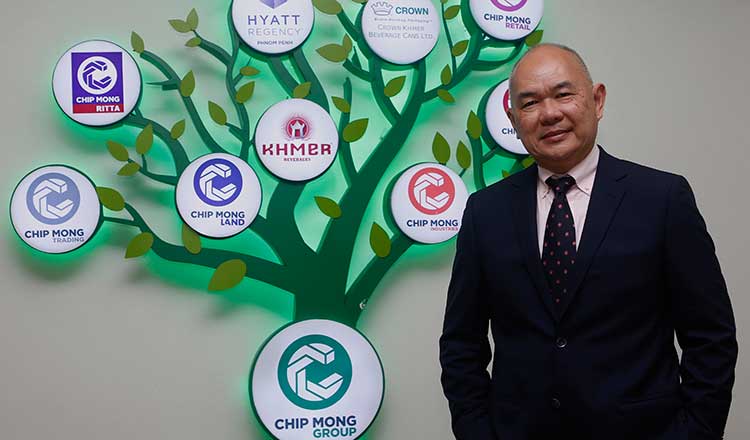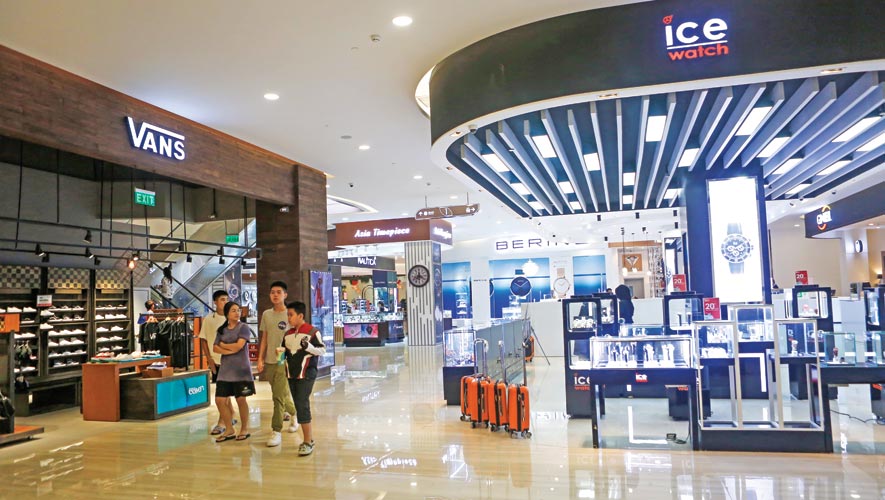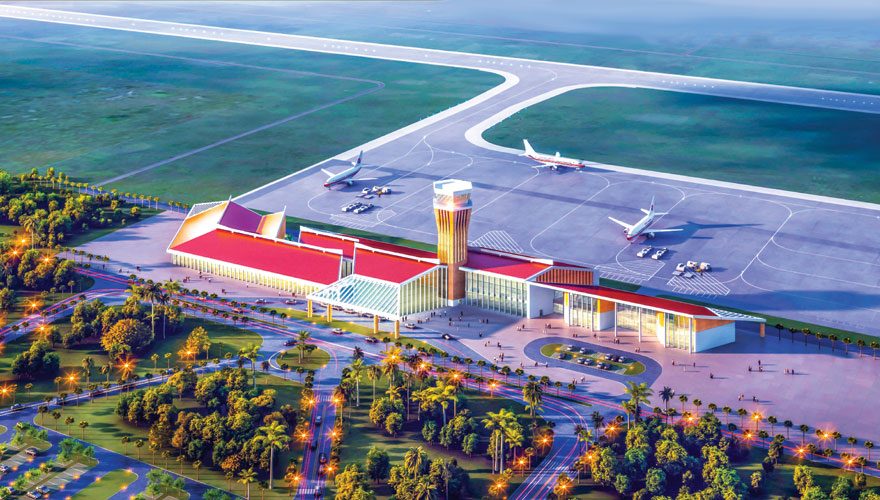To stay competitive and sustainable in the retail industry, employers should innovate, design and refurbish their outlets as well as finding the best tenancy mixture to meet local needs.
For the latest Cambodian Business news, visit Khmer Times Business
In addition to traditional markets, Phnom Penh, which has a population of more than 2 million, will see more modern and lifestyle shopping venues arising in a variety of locations.
As of the second quarter of 2019, 20 have opened, of which three are high-end shopping malls covering 166,084 square metres, eight are more ordinary shopping centres (96,950 sqm), four are basic community malls (24,663 sqm) and three are simple retail podiums (32,340 sqm), according to a new report from real estate services firm CBRE Cambodia.
The boom raises the question how they will all compete, survive and sustain their businesses.
“If we look at the ratios and we compare them against the retail space in other markets such as Bangkok and Singapore, we [in Cambodia] are about 0.1 percent, which means one person in Cambodia has got access to 0.1 square metres of the retail space compared with Singapore [where there] is one person to one square metre of retail space, so we have 10 percent less than Singapore,” says Michael Vong, the director of Shopping Mall of Chip Mong Retail Co Ltd.
Room to grow
Vong points out that the retail market in Cambodia has more room to grow if it is to match neighbouring countries such as Thailand. The ratio of retail space in Bangkok is about 0.8 percent against a population of about 8 million. The figure for Phnom Penh is a much lower 0.06 percent.

He adds, “If we take a much more realistic comparison such as Ho Chi Minh City in Vietnam with 0.12 percent, you will see retail supply is not too much. Phnom Penh is still able to absorb more retail space, especially when tourist arrivals grow.
“What is most important, however, is what consumers can get out of this growing abundance of space. Will they get better quality of goods and services, better shopping experiences, engaging marketing programmes etc?
“When we synergise with the several business units in the Chip Mong Group, particularly Chip Mong Land, where our malls are being built, and with Chip Mong Bank, where we all share the same segment of consumers, we can quite easily fill the gaps in this currently fragmented retail market. I am quite confident that we will make it.”
Cambodia was the fastest growing country in East Asia, and among the few countries that performed better than forecast in 2018. Rapidly rising domestic demand was met by a surge in imports. Strong consumption demand fuelled household purchases of durable goods.
Developing countries such as Cambodia will be moving to the shopping mall, says Thourn Sinan, chairman of the Cambodia Chapter of the Pacific Asia Travel Association. He says that when there are more malls in the city, there will be greater competition over prices, services and products.
“We feel that 20 malls in the capital are not much compared with the 2 million population. There is more room to grow,” Sinan adds. “It depends on the strategy of each mall. The capital will not have a bright future if there are no malls because it is part of the new lifestyle.”
Sinan says the shopping malls have the management system, strategy and quality checks and, as such, are better than traditional markets. It is not only helping the environment, hygiene and the beauty of the city, but it is contributing to protecting public health.

Purchasing power rising
Vong says the buying power of local residents is growing, fuelled by the strong economic growth of 7.5 percent last year, and GDP per capita of $1,500.
The increasing urbanisation of Cambodia, the growing number of families and with almost half of the 15.28 million population aged below 25 years, the country is brimming with young people harbouring aspirations and confidence so it is believed the retail industry will remain buoyant.
“One simple way of measuring consumer purchasing power is when we monitor the sales of electronic goods because when people have higher disposable incomes, they will spend their money on goods such as TVs, fridges and other electrical/electronic gadgets, but the most telling of the goods that they buy are smart phones. When smart phone sales jump, we know they have spare money.
“Income per capita has grown by almost 10 percent to $1,500 last year, but sales of electronic goods have gone up by 28 percent to $413 million, way above the average national growth rate. Out of this 28 percent increase in sales turnover, 68 percent of it came from sales of smart phones, while white goods accounted for another 29 percent.
“We can see that the purchasing power is definitely on the upswing. Our challenge in retail, then, is how to persuade them to spend their money on our products and services.
“People don’t buy just anything and we need to understand their buying behaviour, which changes rapidly, especially among the millennials in Cambodia who make up almost half the population. So, when we plan for a sustainable mall business, we need to look at what we call tenancy mix, the type of tenants we need to bring that can support and fulfill the needs of the segment of the market we target.”
Similarly, Olympia Mall has also witnessed a rise in purchasing power of residents, particularly for those who are living in the city centre. The mall opened to the public on June 22 for its phase I and plans to open phase II by 2021.

Community needs
Olympia Mall, ideally located in the heart of Phnom Penh and surrounded by premium residential and commercial buildings, promises to solve the needs of the community by creating a family centre hub including fashion, restaurants, entertainment, amenities and services.
Its leasing manager Sao Monasy adds that a survey of customers shows lower income earners spend an average of $10 to $30 per person while middle and high-income people can afford products up to $70.
“For our shopping mall, we focus on food and beverage 40 percent, entertainment 30 percent, fashion 20 percent and 10 percent on other services,” Monasy adds. “Mostly, youths come here for entertainment so we offer services to both youth and family groups. We have a place for family and youths. We think F&B (food and beverage) is important.” He says that a lot of products range in price from $10 to $30.
Monasy adds that, currently, there are 100 stores in his mall, 20 percent of which are local and 80 percent are from Singapore, the US, Thailand, Malaysia, Australia and the EU.
“We know the demand of the customers, so we try to find the tenants and products that can offer affordable prices to local customers. We do not focus much on high-end products because it is just window-shopping, but we also have brands for high-end customers too,” says Monasy.
What drives the business in most shopping malls here is the leisure and entertainment sector. At a popular mall in Sen Sok, up to 45 percent of its retail space is dedicated to tenancies related to this category. If people want to have a fun time, perhaps take in a movie, dine out, socialise with friends and families, this is by far one of the better places to visit. Fashion tenants, however, who pay higher rents, account for only 28 percent. “And we know a fair number of people do shop online as well,” says Vong. “We will undoubtedly face a similar situation if we do not appreciate or recognise the fact that shopper-profiling and tenant-mix planning are crucial to the sustainability of the mall business in Cambodia.”
Each mall has its market segments, target customers and unique selling points to compete and attract customers. Now, the new trend is that the mall developers have to focus not only the products, but they must also consider the experiences, feelings, decoration, design, and green spaces, walking spaces and affordable products to keep up with the market, says CBRE’s Manager of Research and Consulting Kim Kinkesa.

Manager Sao Monasy
Rising living standards
Although the capital population is around two million, there is demand for shopping malls because of rising local living standards, economic growth and strong purchasing power.
Kinkesa says there has yet to be any competition among the shopping malls in the capital because each is located in a different area and they target different customers and market segmentation that could help them sustain and avoid excessive competition.
CBRE’s report shows by the end of 2019, Phnom Penh will have five community malls. They are Mid-Town Mall in St 2004, Downtown 93 lifestyle community mall at Boeung Keng Kang I, Chip Mong Noro Mall at Preah Norodom Boulevard, WB Arena at Chak Angre Kroum, National Road and The Point i at Mao Tse Toung Boulevard. Another 14 projects, community malls, shopping malls and retail podiums will be ready in 2020.
Strategic plans
Sao agrees there is competition in the shopping malls as an increasing number open. However, he adds that the competition is good because “we can offer a variety of choice to customers”.
“The competition is widely varied and helps us to be successful. When there is competition, there is change. We have to strengthen ourselves, our strategy. Now, the shopping malls in the capital could fill the demand but it depends on the population. When the population is growing, the demand will rise. We also have room to expand to the outskirts of the city.
“We have a strategy and plan. We always find prime locations. The traffic for the weekend for our mall is from 25,000 to 30,000 customers, while, during weekdays, it is around 10,000 to 20,000 customers,” according to the Olympia Mall’s leasing manager.
Vong acknowledges there is competition among the big players such as Aeon Mall. However, he believes that Chip Mong Retail has set a strategy for a sustainable business.
“If we plan to be another Aeon Mall, or a mall with a similar format, we will not able to differentiate ourselves from them. What is important is not so much the volume of foot traffic to the mall or the design and size of the mall, but the shopper yield – how much a shopper spends on each visit,” he adds.
In the next three years, Chip Mong Retail will have eight shopping malls, a mixture of community and urban retail venues, contributing an almost 25 percent share, by then, in the total supply of shopping mall space in the country.
Vong says, “Yes, we do realise we have a responsibility to help shape the retail industry for consumers here.
“Chip Mong Noro Mall and Chip Mong Bak Touk Mall will be open by end of this year. In 2020 we will get Chip Mong Sen Sok Mall, and Chip Mong 598 Mall. In 2021, we will get Chip Mong Mega Mall 271 and Chip Mong 60M Mall.”




